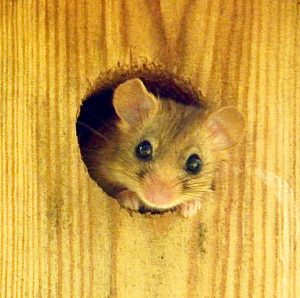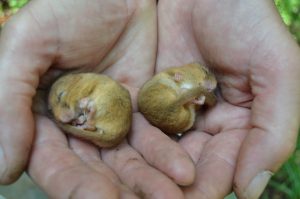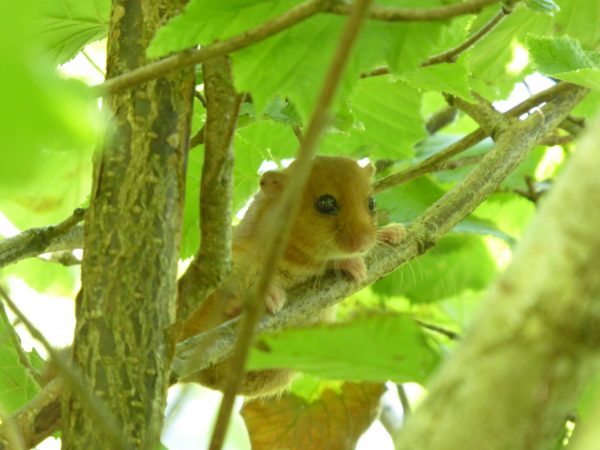Our very own dormice – and boosting the dormouse population

It all started in the spring of 2013 when my wife, Julie, and I bought a wood in Somerset’s Blackdown Hills from woodlands.co.uk. We knew we wanted to manage the woodland for wildlife and one of our first aims was to put up some bird boxes which we did as soon as we moved in. Later that same year when looking for signs of bird-occupancy, such as pecking at the entrance, I was surprised to see a hazel dormouse in one of the bird boxes peering out at me, looking totally relaxed.
Having only seen one dormouse before - when I was hedge-laying - this was tremendously exciting and so I did some more research on these elusive creatures. Contacting the Somerset Mammal Group for further information led me on to the Peoples Trust for Endangered Species (PTES). With a confirmed sighting I went on to register the site for the National Dormouse Monitoring Programme (NDMP), built some proper dormouse boxes and put them up in various locations in the woodland. The next job was to set about obtaining a licence for handling.
Whilst gaining the required experience at existing dormice registered sites, namely The Perch and Goblin Combe, PTES put out a request for a licensed handler to undertake and supervise surveys at our site. During our first year of surveying. we found 1 adult in the spring and 2 adults in the autumn.
 Now as a licensed handler myself, we have completed 3 more years of surveying and have a good uptake of dormice in our boxes, regularly producing 3 litters a year. The most recorded dormice in one survey has been 15 in September 2015. Interestingly, although it is well documented that birds use the dormice boxes, usually early in the season before the dormice move in and the birds have fledged, when cleaning out our bird boxes at the end of the season we have found evidence of dormice occupancy. Only fair I suppose and a possible reason why there is a fluctuation in adult or juvenile numbers recorded on the monthly checks.
Now as a licensed handler myself, we have completed 3 more years of surveying and have a good uptake of dormice in our boxes, regularly producing 3 litters a year. The most recorded dormice in one survey has been 15 in September 2015. Interestingly, although it is well documented that birds use the dormice boxes, usually early in the season before the dormice move in and the birds have fledged, when cleaning out our bird boxes at the end of the season we have found evidence of dormice occupancy. Only fair I suppose and a possible reason why there is a fluctuation in adult or juvenile numbers recorded on the monthly checks.
It is winter now and the dormice boxes have been cleaned and repaired for this year’s dormice season whilst the dormice are hibernating on the forest floor. In the meantime, we have obtained another piece of woodland on the edge of Dartmoor National Park in Devon and are constructing 50 more boxes in anticipation of finding dormice in this area. It appears to be good dormice habitat with a mix of broadleaves, hazel and bramble for eating, and for nesting they find honeysuckle, leaves and grasses. There are also some pine trees not usually associated with large dormice populations according to some experts, but we shall see!

Here's a WoodlandsTV film about encouraging dormice:
Comments are closed for this post.

Hi David
This sounds great…My partner and I are looking to manage our woods for wildlife (also on the edge of Dartmoor – near Sigford).
We are planning on re-introducing some hedgerows for both Dormice and the Greater Horseshoe Bat’s (another European Protected Species – along with dormice!), we have already had a Devon Wildlife Trust/Greater Horseshoe Bat Project advisor visit the site…I’m currently a Marine Mammal Medic with BDMLR but am keen to be registered for bat and dormice handling/surveys so your article is helpful in pointing out the route to take.
Many thanks and keep up the good work.
Jeremy
Jeremy E
19 February, 2018